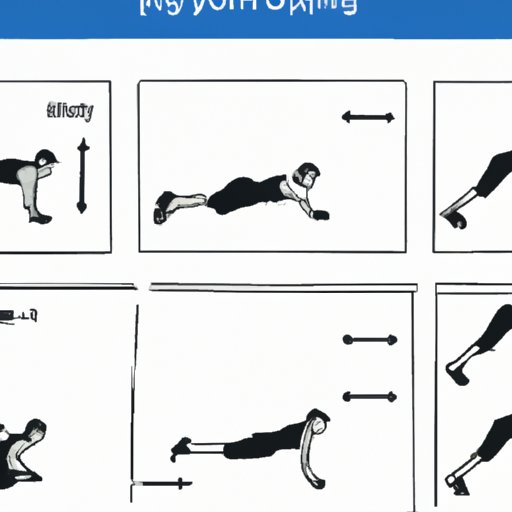Introduction
Split training is a popular form of exercise used in gyms across the world. It involves breaking down your workout into different days for different muscle groups or exercises. This type of training can be highly beneficial for those looking to reach their fitness goals, whether that’s gaining muscle mass, toning up, or improving overall health. But what exactly does split mean in the gym? In this article, we’ll explore what split training is, the benefits it offers, and how you can design an effective split routine.
What Is Split Training?
Split training is a form of exercise that involves breaking down your workout into different days for different muscle groups or exercises. For example, on one day you might focus on chest and triceps exercises, while on another day you might focus on back and biceps exercises. This allows you to give each muscle group enough rest between workouts, allowing them to recover and build strength.
Split training can also involve focusing on different types of exercises on different days. For example, you could do cardio on Monday, weightlifting on Tuesday, and HIIT (High-Intensity Interval Training) on Wednesday. This type of split allows you to mix up your routine and keep it interesting.
Benefits of Split Training
There are many benefits to split training, including:
- More time for rest and recovery. By splitting up your workout into different days, you’ll have more time to rest and recover between workouts, which is essential for building muscle and strength.
- More efficient workouts. Because you’re focusing on one muscle group or type of exercise at a time, you’ll be able to perform each exercise with more intensity and focus, resulting in more efficient workouts.
- More variety. As mentioned above, split training also allows you to mix up your routine and keep it interesting. This can help to prevent burnout and boredom.
- Better focus. When you’re only focusing on one muscle group or type of exercise at a time, you’ll be able to give it your full attention, resulting in better results.
How to Design an Effective Split Routine
Designing an effective split routine starts by analyzing your goals. Are you looking to gain muscle mass, tone up, or improve your overall health? Knowing your goals will help you determine which type of split is best for you.
Types of Splits and Their Advantages
Once you’ve determined your goals, you can start to think about which type of split is best for you. Here are some of the most popular splits and their advantages:
- Full-body splits: These involve working out all major muscle groups in each session, usually two or three times per week. This type of split is great for beginners, as it provides a good foundation for building strength and muscle.
- Upper/lower splits: This type of split involves focusing on upper body exercises one day and lower body exercises the next. This is great for those who don’t have much time to work out, as it allows you to target both the upper and lower body in two shorter sessions.
- Push/pull splits: This type of split involves focusing on pushing exercises one day and pulling exercises the next. This is great for those looking to build strength, as it allows you to focus on specific muscle groups.
- Muscle-group splits: This type of split involves focusing on one muscle group each day. This is great for those looking to really target a specific muscle group and build muscle mass.

Tips for Maximizing Results From Split Training
Once you’ve chosen your split, there are several tips you can use to maximize your results:
Proper Form and Technique
Using proper form and technique is key to getting the most out of your split training. Make sure you take the time to learn proper form and technique for each exercise you do, as this can help to maximize your results and reduce your risk of injury.
Progression and Recovery
In order to get the most out of your split training, it’s important to focus on progression and recovery. Make sure you’re gradually increasing the difficulty of your workouts over time, and make sure you’re giving your body enough time to rest and recover between sessions. This will help to maximize your results and keep you from getting burned out.
Setting Realistic Goals
Finally, it’s important to set realistic goals for yourself. Don’t expect to reach your fitness goals overnight; it takes time and dedication. Set realistic goals for yourself and focus on making small improvements each day. This will help to keep you motivated and ensure that you’re consistently making progress towards your goals.
Conclusion
Split training is a great way to reach your fitness goals. It allows you to focus on specific muscle groups or types of exercises, and it gives you more time for rest and recovery. With the right split and the right approach, you can maximize your results and reach your fitness goals faster than ever before.
In summary, split training offers many benefits, including more efficient workouts, more variety, better focus, and more time for rest and recovery. To get the most out of your split training, it’s important to analyze your goals, choose the right type of split, use proper form and technique, focus on progression and recovery, and set realistic goals. By following these tips, you can maximize your results and reach your fitness goals faster than ever before.
(Note: Is this article not meeting your expectations? Do you have knowledge or insights to share? Unlock new opportunities and expand your reach by joining our authors team. Click Registration to join us and share your expertise with our readers.)
